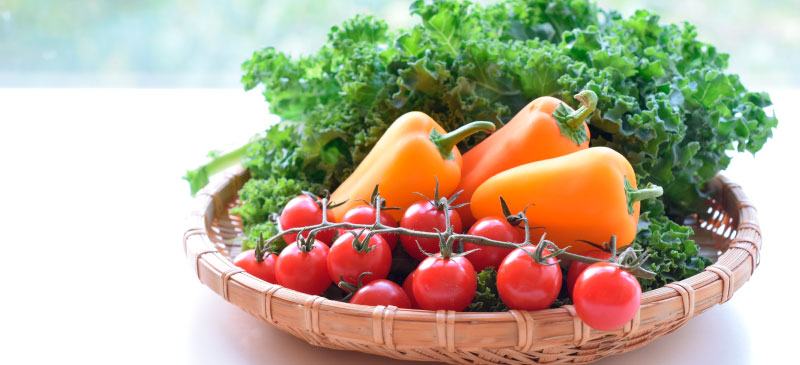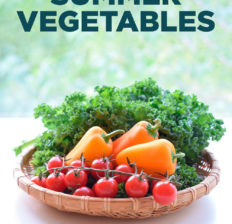This Dr. Axe content is medically reviewed or fact checked to ensure factually accurate information.
With strict editorial sourcing guidelines, we only link to academic research institutions, reputable media sites and, when research is available, medically peer-reviewed studies. Note that the numbers in parentheses (1, 2, etc.) are clickable links to these studies.
The information in our articles is NOT intended to replace a one-on-one relationship with a qualified health care professional and is not intended as medical advice.
This article is based on scientific evidence, written by experts and fact checked by our trained editorial staff. Note that the numbers in parentheses (1, 2, etc.) are clickable links to medically peer-reviewed studies.
Our team includes licensed nutritionists and dietitians, certified health education specialists, as well as certified strength and conditioning specialists, personal trainers and corrective exercise specialists. Our team aims to be not only thorough with its research, but also objective and unbiased.
The information in our articles is NOT intended to replace a one-on-one relationship with a qualified health care professional and is not intended as medical advice.
20+ Summer Vegetables to Eat & Grow (+ Their Benefits)
June 24, 2025

Eating seasonally has been shown to help increase nutrient intake, contribute to a more sustainable environment and support local farmers. With that said, growing and buying summer vegetables from your local farmers market is a great way to improve your health and contribute to your community.
What are the best summer vegetables to enjoy during the warmest months of the year? Some include leafy greens like kale, shallots, bell peppers, squash, garlic and herbs, such as basil.
What vegetables are in season during the summer? Here’s a list of some of the healthiest ones, along with their benefits:
1. Kale and other summer greens
Kale is one of the healthiest greens available considering it’s full of antioxidants, including isothiocyanates; vitamins C, A and K; manganese; copper; magnesium; potassium; and more.
This nutrient-dense leafy green supports immune health, skin, vision and blood clotting. It’s also rich in antioxidants like quercetin and kaempferol that help reduce inflammation.
Kale provides fiber for digestion, calcium for bone health, and iron for energy and red blood cell production. Additionally, it’s low in calories, making it a great food for weight management.
Other heat-tolerant greens to try in the summer include Manoa lettuce and mizuna, which have bright colors and yield greens every three to five weeks. These summer vegetables are low-calorie and hydrating foods.
2. Zucchini/summer squash
With loads of different types to try, such as delicata, crookneck, cousa, pattypans or yellow summer squash, these summer vegetables are low in calories, easy to blend into recipes, and good sources of vitamin C and B6.
Zucchini and other summer squash are also high in water, making them great for hydration and weight management. These summer vegetables are good sources of vitamin C for immune support, vitamin A for eye health, and potassium for heart and muscle function.
Zucchini also contains antioxidants like lutein and zeaxanthin, which protect against cellular damage and support healthy vision. Its fiber content aids digestion and helps regulate blood sugar levels.
3. Eggplants
These purple veggies hold unique compounds within their dark-colored skins, including polyphenols such as anthocyanins, the same type found in berries and red wine. Eggplant can help fight free radical damage and also provides you with manganese and folate, which support bone and metabolic health.
Eggplant is low in calories and high in fiber, which supports digestion and helps with blood sugar control. It’s a good source of antioxidants, particularly nasunin, a compound found in its purple skin that protects cells from damage and supports brain health.
Eggplant also provides small amounts of vitamins and minerals, like vitamin K, vitamin C and potassium, contributing to heart health and overall wellness.
4. Tomatoes
Tomatoes are excellent for boosting your intake of vitamin C and A, fiber, and disease-fighting antioxidants, such as lycopene. Since each type has its own unique taste, plant several different species if possible, such as grape, roma, heirloom and beefsteak tomatoes.
Tomatoes support immunity and skin health, along with vision and cell growth. They’re also a top source of lycopene, a powerful antioxidant linked to reduced risk of heart disease and certain cancers.
Tomatoes provide potassium for heart and muscle function, and their high water content aids hydration as well.
5. Cucumbers
Cucumbers are extremely low in calories and carbs and very high in water, so they’re hydrating and make a great post-workout snack. Not only can you eat and juice them, but they can be used on your skin to de-puff bags under your eyes and curb swelling.
Cucumbers are excellent for weight management thanks to their low calorie content. They also provide vitamin K for bone health and blood clotting, along with small amounts of vitamin C and potassium.
Cucumbers contain antioxidants like flavonoids and tannins too, which help reduce inflammation and protect cells from damage.
6. Shallots
As members of the allium plant family, shallots are related to onions and garlic. Organosulfur compounds found in allium vegetables have been shown to have antibacterial, antifungal and antiviral properties, meaning they generally support immune defenses.
These summer vegetables are low in calories and rich in antioxidants, including quercetin and allicin, which support heart health and reduce inflammation. They provide vitamin C for immune function, vitamin B6 for metabolism and manganese for bone development.
Shallots also contain compounds that may help improve blood circulation and have mild antibacterial properties.
7. Bell peppers
Whether you like sweet, spicy, green, yellow or red bell peppers best, you’ll benefit from a high intake of vitamin C, vitamin E and antioxidants, such as beta-carotene, when you consume them. Spicy peppers, which contain the compound called capsaicin, also support a healthy metabolism and can help curb your appetite.
Bell peppers are known to help boost immunity and skin health. These summer vegetables are rich in antioxidants like carotenoids (including beta-carotene and lutein) that support eye health and reduce inflammation.
Bell peppers also provide vitamin A, vitamin B6 and fiber, aiding metabolism, nervous system function and digestion. Their low calorie content makes them great for weight management as well.
8. Basil
One of the most popular herbs in the world, basil’s signature sweet taste makes a great addition to both meals and beverages. Basil is also used to make essential oil because it’s very high in protective compounds, including eugenol, linalool and citronellol, which help fight inflammation.
Basil is low in calories and rich in antioxidants that help reduce inflammation and protect cells. It provides vitamin K, important for blood clotting and bone health, as well as small amounts of vitamin A, magnesium and iron, which support immune function, muscle health and oxygen transport in the blood.
9. Garlic
Garlic is the best dietary source of the compound called allicin, which has the natural ability to fight pathogens and help protect against infections. You can even save garlic peels and use them in many ways, such as for composting and warding off insects from your garden.
This summer herb is low in calories but has powerful antioxidant, anti-inflammatory and immune-boosting effects. It provides vitamins C and B6, manganese, and selenium, supporting immune health, metabolism and heart function.
Garlic may also help lower blood pressure and improve cholesterol levels.
10. Okra
Okra thrives in hot, humid climates, making it perfect for summer gardens in the South and beyond, so naturally it’s on the list of top summer vegetables. The pods are great in gumbo, grilled or sautéed, and the plant also supports pollinators with its hibiscus-like flowers.
Okra is low in calories and high in fiber, which supports digestion and helps regulate blood sugar. It’s a good source of vitamins C and K, promoting immune health and blood clotting.
Okra also provides antioxidants like flavonoids and polyphenols that protect cells from damage, along with folate, which is important for cell growth and pregnancy health.
11. Green beans
Green beans, also known as snap beans or string beans, grow quickly and can be harvested multiple times throughout the summer. They’re packed with vitamin C, fiber and folate, and they are delicious steamed, sautéed or eaten raw in salads.
These summer vegetables are low in calories and rich in fiber, supporting healthy digestion and blood sugar control. They provide vitamins C and K, which boost immunity and aid blood clotting, as well as folate for cell growth.
Green beans also contain antioxidants like flavonoids that help reduce inflammation and protect against chronic diseases.
12. Sweet corn
A warm-season favorite, sweet corn grows best in full sun and well-drained soil. It provides a good source of fiber, B vitamins and natural sugars.
Sweet corn’s fiber aids digestion and helps maintain steady blood sugar levels. Meanwhile, its thiamine and folate support energy metabolism and cell health.
Sweet corn also contains antioxidants, such as lutein and zeaxanthin, which promote eye health, along with carbohydrates that offer a quick energy boost. Enjoy it fresh off the cob, grilled, or added to salsas and salads.
13. Beets
Beets are nutrient-dense root vegetables high in folate, potassium and antioxidants. Both the roots and beet greens are edible.
Beets are rich in dietary nitrates, which can improve blood flow and lower blood pressure. These summer vegetables provide fiber for healthy digestion and are high in folate, essential for cell growth and pregnancy, as well.
Beets also contain antioxidants like betalains that reduce inflammation and support liver detoxification, along with vitamin C and manganese for immune and bone health.
Sow them in mid- to late summer for a fall harvest, and roast or juice them for maximum flavor and benefit.
14. Radishes
Fast-growing and easy for beginners, radishes can go from seed to harvest in as little as three to four weeks. They thrive in warm soil and add a peppery crunch to salads and slaws. Some summer varieties are also resistant to bolting in heat.
These summer vegetables are low in calories and high in water, making them great for hydration and weight management. They provide vitamin C for immune support and antioxidants that help fight inflammation.
Radishes also contain fiber to aid digestion and compounds like glucosinolates, which may support liver health and detoxification.
15. Carrots
Carrots can be planted in early to mid-summer and harvested in late summer to fall. Rich in beta-carotene (a precursor to vitamin A), they support eye health, skin and immune function.
Carrots also provide fiber for digestion, vitamin K for bone health and antioxidants that help reduce inflammation.
Low in calories, they make a nutrient-dense snack or addition to meals. Try roasting, juicing or eating them raw as a snack.
16. Spinach (heat-tolerant varieties)
Although traditionally a cool-season crop, certain spinach varieties like Bloomsdale or New Zealand spinach are more heat-tolerant. Spinach is rich in iron and folate, as well as vitamins A, C and K.
Malabar spinach, in particular, thrives in hot weather and grows as a climbing vine. It’s rich in vitamins A and C, calcium, and antioxidants.
The leaves have a slightly mucilaginous texture and can be used in salads, soups and stir-fries, perfect for summer nutrition when regular spinach struggles to grow. Use it in smoothies or sautéed dishes as well.
17. Snap peas
Snap peas offer sweet, crisp pods that are completely edible. They can be grown in early summer or again in late summer for a fall harvest.
Snap peas are low in calories and high in fiber, supporting digestion and satiety. They’re a good source of vitamin C for immune health, vitamin K for bone strength and folate for cell growth.
Snap peas also provide antioxidants and a small amount of plant-based protein, making them a nutritious, crunchy snack or side. These summer vegetables are great for adding to stir-fries and salads.
18. Leeks
Leeks, part of the allium family, are milder than onions and great for soups, sautés and casseroles. Summer varieties grow faster than overwintering types.
Just like most summer vegetables, leeks are low in calories and high in vitamins A, C and K, which support immune health, vision and blood clotting. They contain fiber for digestive health and are rich in antioxidants, including polyphenols and kaempferol, which help reduce inflammation and protect against chronic diseases.
Leeks also support heart health by promoting healthy blood pressure and cholesterol levels. These summer vegetables provide prebiotics and nutrients like manganese and folate too.
19. Herbs
Herbs like mint, cilantro, dill and parsley flourish in summer heat and can be grown in garden beds or containers. They enhance the flavor of fresh dishes while also offering antioxidants and antibacterial properties.
These summer vegetables are rich in essential nutrients. For instance, they provide vitamin C for immune support, vitamin K for bone health and blood clotting, and small amounts of vitamin A and folate.
These summer herbs also contain anti-inflammatory and antimicrobial compounds that support overall health and digestion.
20. Yardlong beans
Yardlong beans, also called asparagus beans or Chinese long beans, are a unique summer crop that thrives in hot, humid weather. These vigorous climbers produce slender pods that can reach up to 18 inches long.
Yardlong beans are low in calories and high in fiber, supporting digestive health and blood sugar control. They’re a good source of vitamin C for immunity, vitamin A for vision and folate for cell growth.
Yardlong beans also provide iron and magnesium, which help with energy production and muscle function.
These beans offer a tender texture with a mild, earthy flavor. They’re excellent in stir-fries, curries and salads.
How to add to your diet
Here are some ideas for using summer vegetables at home to make healthy meals that the whole family will love:
- Make sautéed summer veggies with tomatoes, eggplant, zucchini and onion, plus any herbs and spices you like. This makes a great side dish served with protein or even a sauce or chilled soup if blended. Sautéed veggies are also the perfect ingredients for pasta primavera.
- Add whichever peppers you love, such as sweet or hot peppers, to homemade tacos, pizzas or burritos. Shallots and zucchini are other good additions to these recipes.
- Mix together homemade salsa using roasted tomatoes, peppers and garlic.
- Stuff zucchini, peppers or eggplant with beans, whole grains, garlic and spices.
- Roast and spread garlic on fresh bread, or use raw garlic to marinade meat or fish.
- Try basil in homemade pesto, fresh marinara pasta sauce, or even mocktails and cocktails. (It pairs well with lemon and strawberry.)
- To bring out the natural flavor of summer veggies, toss them in oil, and then grill them so they caramelize.
How to grow
Which summer vegetable crops can you grow at home? Just about all of them, assuming you have the room.
The exact types of summer veggies that will do best in your yard depends on the climate where you live.
Here are some tips for growing summer vegetables in your own garden:
- Tomatoes love sun and can grow to be pretty tall if the conditions are right, so put them in large pots with plenty of sunlight. Plant them as soon as the weather warms in spring for the best yields.
- Peppers grow well with tomatoes and eggplants, since they all require the same conditions: full sun, rich soil and space to expand.
- Basil and other herbs are great for deterring pests and rodents; therefore grow them by other plants to keep them protected.
- Cucumbers like to climb up trellises or arbors, so give them something to hang on to. They also love full sun exposure and soil that is moist.
- Eggplant roots like to be kept moist and cool. If planting them in the ground, spread mulch around the base to prevent them from heating too much or drying out.
- To grow the most greens over the summer, water and pick them regularly, and consider moving them to the shade if possible or giving them coverage on very hot days.
- Shallots do best in full sun when planted in loose soil that drains well. Try not to overwater them.
- Okra, eggplant and sweet corn thrive in high temperatures.
- Radishes and snap peas mature in weeks, great for succession planting.
- Spinach, carrots and leeks can be sown later for harvest into fall.
- Compact herbs are easy to grow in pots and ideal near vegetable beds to attract pollinators.
- Okra, leeks, beets and snap peas can bridge summer into autumn produce.
If possible, grow organic veggies at home instead of using pesticide sprays.
You can help keep plants healthy and free from pests by growing citronella and other herbs near your garden and by adding leftover coffee grounds and garlic peels to your garden, which naturally repel insects and rodents.
Other tips for maintaining an organic garden over the summer include:
- Composting food waste from your kitchen.
- Rotating plant families every year.
- Testing the soil to see if it needs an adjacent in pH.
- Using a greenhouse if necessary, such as if you’re starting to grow seeds in the spring when it’s still cold outside.
Risks and side effects
While most of the vegetables above are safe for children and adults to eat, allergies are always a potential concern. For example, if you have a known allergy to nightshade veggies, avoid eggplant and peppers.
If buying conventional produce, wash your veggies thoroughly before eating them. Most can be stored at room temperature for several days, but then transfer them to the fridge to prevent fruit flies and mold from forming.
Conclusion
- What vegetables are popular during the summer? Some of the best summer veggies include kale, squash, garlic, herbs like basil, peppers, eggplant, shallots and tomatoes.
- Aim for a variety of summer vegetables to boost your nutrient intake, since each type provides its own unique mix of vitamins, minerals and other compounds.
- Don’t forget to consume summer fruits in addition to summer vegetables to consume a well-rounded diet.






